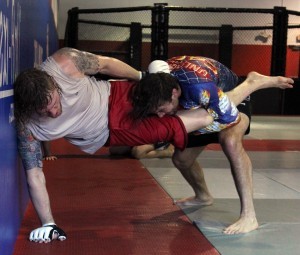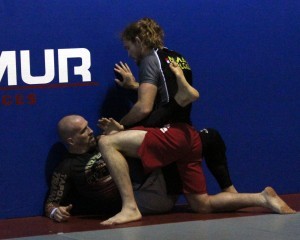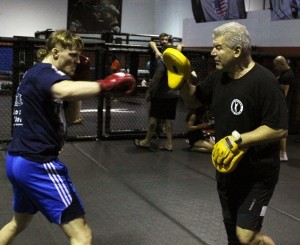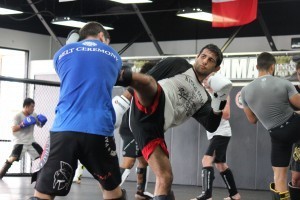Mark Tullius's Blog, page 14
August 26, 2020
A Fantastic Way to Get Audiobook Reviews and Discover Your Audience
One of the biggest obstacles an independent author must overcome is obtaining quality reviews. While obtaining solid reviews for eBooks can be a struggle, there are several places you can turn. One of my favorite places to gain early reviews is through NetGalley, where readers get free access to books before they’re released.
Last month, thanks to an Independent Book Publishers Association (IBPA) email, I saw that NetGalley had begun an audiobook program. I signed up for a 2-month audiobook listing and a category spotlight. ($239 for both through the IBPA.)
My audiobook Untold Mayhem: An Assortment of Violence appeared on NetGalley on July 21st, and in the last five weeks it has already accumulated over 50 reviews, many of which are also being uploaded to Goodreads, personal blogs, and YouTube (Click here to check out my favorite so far at BOOKS Yada, Yada.)
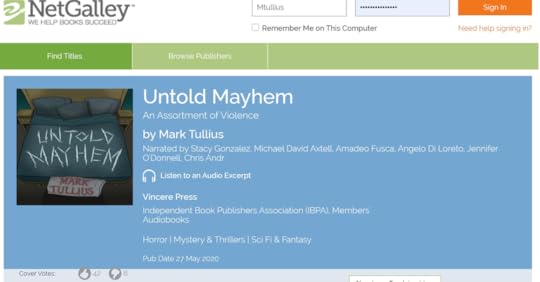
At first, I was worried that I’d made a horrible mistake. A two-star review called my writing “rather mediocre.” Another two-star review said, “Reads like middle-schoolers sitting around a campfire telling ghost stories.”
A lot of reviews came in at 3 stars with the listeners stating they really enjoyed a number of the stories but not all. I considered that fair as I feel the same. Then several 4 and 5-star reviews started popping up, with reviewers enjoying most of the stories and saying they were going to look up more of my writing.
One of the best aspects of the reviews was being able to see not only who enjoyed the writing, but which stories they loved and which ones they hated. It also helped me pinpoint the type of reader/listener I should be marketing to. Another useful feature that NetGalley provides is letting reviewers like or dislike the cover (42 likes and 8 dislikes.)
Although reviews of my writing ability were varied, one thing that was nearly unanimous was the quality of the narration. This was my first multicast audiobook, and I agree with reviewers that it made for a much better experience than simply reading the stories myself or having one narrator. Reviewers said it helped them transition between stories and set apart each of the first-person point of view stories.
I’m grateful to Jayme Mattler for putting together this audiobook, especially during such a trying time. Around February, she had nearly twenty narrators selected, but COVID shut down or limited access to recording studios. The nine narrators that remained did a fantastic job bringing these stories to life and making each of their stories sound distinctive. I owe huge thanks to Stacy Gonzalez, Michael David Axtell, Amadeo Fusca, Angelo Di Loreto, Jennifer O'Donnell, Chris Andrew Ciulla, Vivienne Leheny, Landon Woodson, Jay Ben Markson.
From now on, I will only put up short story collections with a multicast, and I’ll put them on NetGalley through the IBPA. I just put up Try Not to Die: In Brightside, a first-person novella, and will add Beyond Brightside as soon as it is finished recording in a few months. This is too good of a program not to utilize it.
As I’m sure most independent authors would agree, getting 50 reviews in a month is great. Not only have I learned more about the type of person I should market to, but I’ve already made some fantastic connections; one of my favorite parts about writing.
Yesterday I had Deana Eager from BOOKS Yada, Yada on my podcast. She had reviewed both Untold Mayhem and Twisted Reunion on her YouTube channel and I thought it’d be a great opportunity to see what some of her favorite dark fiction was so I could market to fans of those authors.
To hear Deana’s list, while watching me comfort my second-grader because I’m that cool of a dad and that shitty of a podcast host, you can check it out here. If you just want to listen and leave all that cute stuff for the sissy non-horror fans then find the link to download the podcast from your favorite provider through my Follow Me link.
If you are an independent author, I would highly recommend IBPA. They offer education services and tools, and every year I save more through their discounts for products like NetGalley and Lightning Source than I spend on membership. They have been incredibly helpful and are a great resource, especially for independent authors looking to build their readership.
And if you're looking to go multicast for your next audiobook, I suggest contacting Jayme Mattler who was a real pleasure to work with.

June 10, 2020
Findaway to Get More Listeners

The other day a fan on Twitter asked how she hadn’t heard of my podcast Vicious Whispers where I share a chapter or short story at the end of each episode. The easy answer was that I’m terrible at social media and marketing and spend all my time creating. As any independent author will tell you, that’s not a very wise tactic.
The Twitter question made me think of what I could do differently. Knowing I’m not prepared to commit to anything that takes more than a day, I looked for a way that would increase exposure quickly.
Generally, I focus on ebooks, but with three new audiobooks released this year and two more on the way, I figured audio would be the smartest approach. Regardless of format, reviews are incredibly important, so I went to
I was disappointed I wouldn’t be able to obtain codes for my other audiobooks through ACX because they aren’t exclusive, but then remembered that Audiobooks Unleashed could now give away codes from
Last Friday, in less than an hour, I put up five audiobooks on AU, opting for the cheapest plan ($10 per book) because I wasn’t in a rush to get reviews and figured 25 codes per book would last a while. By the time I entered my last book, I realized that getting downloads was not going to be an issue with several copies already requested.

I was surprised to see that in less than one day both ,Twisted Reunion and ,Brightside used up all 25 of their codes. ,Somber Stroll, Ain’t No Messiah,, and ,Unlocking the Cage are all at about one-third. Altogether, 80 codes were requested in a day; a great amount of exposure for a $50 price tag.
My latest audiobook ,Untold Mayhem is going through quality review through Findaway, and as soon as I get the giveaway codes, I’ll put them up on AU. Same goes for ,Try Not to Die: In Brightside which should be out next month, and for all future audiobooks.
Authors interested in putting their books on
Listeners looking to review free audiobooks and authors looking for reviewers can check out
For a look at my audiobook catalog with samples click here to
#audiobook #book #Findaway #Audible #ACX #author #fiction #suspense #horror #review #bookreview









May 14, 2020
Paying the Price
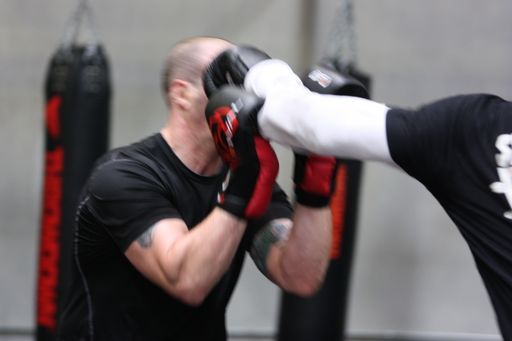
Last year, I hit a pretty hard depression. Part of it was physical, not being able to train jiu jitsu or practice yoga due to neck, back, and shoulder issues. The other part was mental, the research for my book on traumatic brain injuries (TBI) and Chronic Traumatic Encephalapothy (CTE) weighing me down.
I couldn’t stop thinking about Junior Seau and Andre Waters killing themselves. Aaron Hernandez and his ravaged brain, convicted of the murder of a friend. I worried about Gary Goodridge and my numerous MMA friends dealing with varying degrees of brain damage. My thoughts would often turn to a former boxing opponent and sparring partner whose speech had become difficult to understand, his emotions a mess. I was burdened with the knowledge that a Brown University teammate, who'd spent the last six years dealing with CTE symptoms, only had a short time to live thanks to the combination of the neurodegenerative disease and Acute Myeloid Leukemia. This man, who’d been told he had the frontal lobe of a 75-year-old, rattled off stories about myself that I can’t even recollect, my time at Brown, and much of my life, a messy blur.
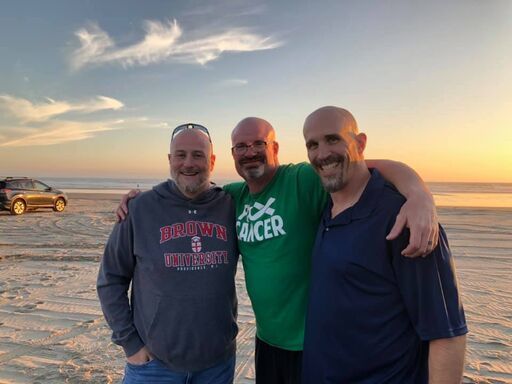
I told myself to get over it; I was making this into something bigger than it needed to be. I hadn’t had nearly the amount of head trauma many NFL players had. Except for excessive caffeine and cannabis use, I’ve led a healthy lifestyle over the last decade, and if my brain was deteriorating further, surely, I’d be aware of it.
But I couldn’t deny that feeling was back. The one I’d kept at bay through yoga, jiu jitsu, cognitive therapy, meditation, cold therapy, alcohol, and psychedelics. That dark, scary feeling I’d had since I was ten, if not younger.
The mixture of rage and depression didn’t compute. It used to for the explosive child, the troubled teenager, the failed fighter, the loser who never did a damn thing with his degree, but that was another life. My life was beautiful now, with a wonderful wife and two incredible children. We were set financially and everyone was healthy. I had close friends, a good support system, was publishing books at a proficient rate, and had found a balance between family and writing.
The story I’d been telling myself was that I had lucked out and was blessed with a resilient brain, all of the concussions and knockouts free of any lasting effects. Anyone that’s read my fiction knows I’m a doom-and-gloom kind of guy, so maybe I’m just hardwired to focus on the negative. And even if all those brain injuries did cause problems, surely I’d gotten past them by now, especially with the treatment protocol I was on.
But still, I had to consider the symptoms. I opened my laptop and started a new document, realizing that if I didn’t write it down, I’d forget all about it or rationalize it away.
Impulsive behavior: Guilty. Whether gambling, video games, or drugs, I can be an addict.
Memory loss: I can’t tell you the number of times friends have shown me photos of events to prove that I was there. At a recent party, three different people laughed somewhat uncomfortably when I introduced myself to them, even though we’d been acquaintances for years.
Difficulty planning and carrying out tasks: It can take me days to respond to emails. The littlest things are written down in hopes I’ll one day do them.
Substance abuse: Thirty-two years of cannabis and counting, along with plenty of experimentation.
Emotional instability: It’s not all the time. Usually I’m a fairly happy, even sweet guy, but it doesn’t take a whole lot to rock the ship. One crappy night of sleep and my emotions are all over the place. I don’t respond well to confrontation.
Depression or apathy: I never would’ve considered myself depressed until a year ago, but that’s just due to the stigma behind the word. There’s no denying that’s what I’m experiencing.
Suicidal thoughts or behavior: I struggled with this most my life, spending too many of my college nights with a gun in my mouth. It’s not something I’d ever do now that I have kids, and the urge has been dormant for the past decade, but even a trace of that self-destructiveness is something I must be aware of.
So regardless of the source of damage, there’s something wrong with me. Whether it was from a TBI, CTE, substance abuse, childhood scars, or good ole genetics, my brain is not in a good place.
That thought was depressing, but I’d written it down, given a voice to my fear. I felt a little better about it the following day, but couldn’t read it without breaking into tears. Then after an honest and loving talk with my wife, something shifted and I wrote three more lines that changed everything for me.
But it’s all good.
I’m going to fix it.
I have to.

Fixing it is what I’d been attempting to do since 2013 when a close friend urged me to research brain damage. He’d been photographing segments of my journey to 100 MMA gyms across the country, and was having a hard time watching me get my ass kicked by athletes half my age and with three times my talent.
The more I read up on TBI’s, the more I feared I had really screwed up. I was a reckless kid, experiencing my first serious concussion when I smacked my head on a schoolyard sprinkler at six or seven. It’s impossible to count how many I’d had since, but there had been plenty. In seven years of high school and college football, I’d lost consciousness six times. On top of that I’d had constant trauma playing defensive line like a ram, always striking helmet to helmet. While attempting an MMA career, I was knocked out twice. On another two occasions, my brain was rattled so badly that I completely lost at least 15 minutes of time, and there were a ridiculous number of occassions where I left the gym with a moderate concussion. While attempting a boxing career, I consistently slurred my words and reversed their order. Between boxing and MMA, I had 14 professional matches and a losing record, a sure sign I’d taken more damage than I had dealt. Add a few motorcycle accidents and a 70-mph car collision, and it is amazing I can write my own name, let alone a novel.
The cumulative brain trauma made me a prime candidate for dementia and was likely responsible for my spotty memory. All the afore mentioned damage had been almost a decade before the latest stretch of unnecessary blows to the head where I acquired at least five more concussions: my head slamming off the mat at Team Quest, nearly being knocked out at Syndicate MMA, a nasty head kick at Alliance MMA, and brutal beatings by Fabricio Werdum and Renato Babalu at King’s MMA.
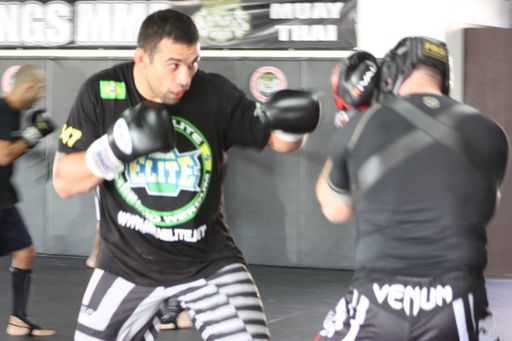
Although I wasn’t excessively worried about my brain health, I was concerned enough to implement some recommendations I found online. I began playing brain games on Lumosity and a couple other platforms, my scores in the top percentiles assuring me I was fine.
The other big take away was the importance of exercise. Not only can regular exercise relieve stress, help with pain, and improve overall well-being, it’s also good for the vascular system in your brain. Fortunately, I was motivated to continue training jiu jitsu and practicing yoga, feeling fit at the lightest weight I’d been since high school at 208 pounds.
In 2015, I participated in the Professional Fighter study at the ,Cleveland Clinic Lou Ruvo Center for Brain Health in Las Vegas, NV. Filling out the paperwork about my past was depressing but I felt better after undergoing a battery of tests, blood work, and an MRI. The head of the program, Dr. Bernick, assured me I was doing what I should to hopefully postpone or prevent a decline. On top of the exercise and better sleep, this included practicing guitar and learning German, activities that stimulate the brain.
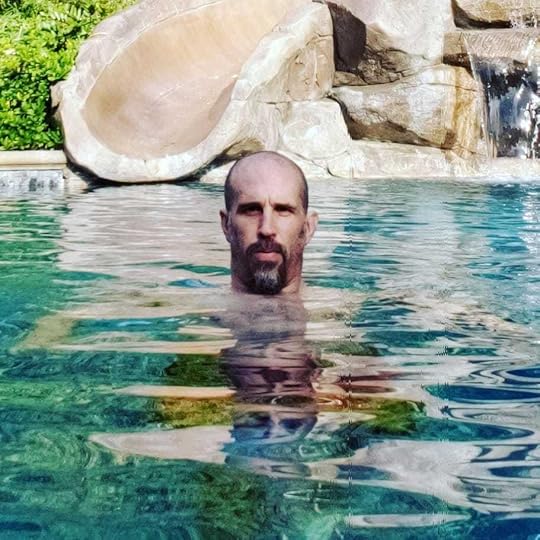
In 2018 I added Wim Hof inspired breathing and cold-water therapy to my routine, cleaned up my diet, and improved my sleep. I also began seeing a therapist, aware that cognitive therapy could rewire the brain and perhaps help me figure out why I had always been so dark and full of self-hate. I also wanted an unbiased person who could assess me and my personality and then monitor how I responded to the different types of treatments, but the real motivation for going was because my marriage needed it.
The therapist helped me see the ways I was failing as a spouse and how to address issues that needed resolving. It also shed light on my perfectionism and low self-esteem. Therapy seemed to reduce my overall anger and anxiety, but it was still there.
During this time, I listened to the Joe Rogan Podcast #1056 with Dr. Mark Gordon of the Millennium Neuro-Regenerative Centers. Dr. Gordon described what happens when a traumatic brain injury occurs and dispelled many of the myths surrounding them. Most people assume in order to have a TBI the individual needs to be knocked unconscious or have a very significant blow to the head, but Dr. Gordon explained the process could be started much more easily, even with a minor car accident or ride on a roller coaster. Once the injury occurs, the brain becomes inflamed and this inflammation expands and disrupts the brain’s ability to self-regulate hormones.
Dr. Gordon explained how many symptoms of PTSD and TBI overlap such as depression, anxiety, irritability, cognitive deficits, insomnia, and fatigue. In Gordon’s opinion, PTSD is a manifestation of a TBI. Head injuries are often forgotten but commonly identified during detailed patient histories. His approach is to treat patients with hormone replacement therapy to reduce the injury-provoked inflammation in the brain that has compromised functioning. At the time, he claimed to have turned around the lives of over 1,500 military personnel.
Although I didn’t believe I needed the protocol, I talked it over with my wife and we agreed the cost of the program would be worth trying. Even if it didn’t do anything for me, I could write about it in this book.
It wasn’t long before Dr. Gordon’s daughter, Dr. Alison Gordon went over my blood work results with me, pointing out all the ways it was consistent with someone who had TBI’s. She recommended several supplements and one prescription of a natural testosterone booster to bring my hormones to normal levels. I wasn’t expecting much change because I felt fine, but two weeks after being on the protocol I broke down crying in my backyard, not due to anything being wrong, but because it was the first time I fully realized just how terrible my symptoms had been. Not having the weight of the incredibly high levels of anger, depression, and irritability was overwhelming. Another two weeks on the protocol and I felt as if I was in, the best emotional place I’d ever been with a mental clarity I'd been lacking.
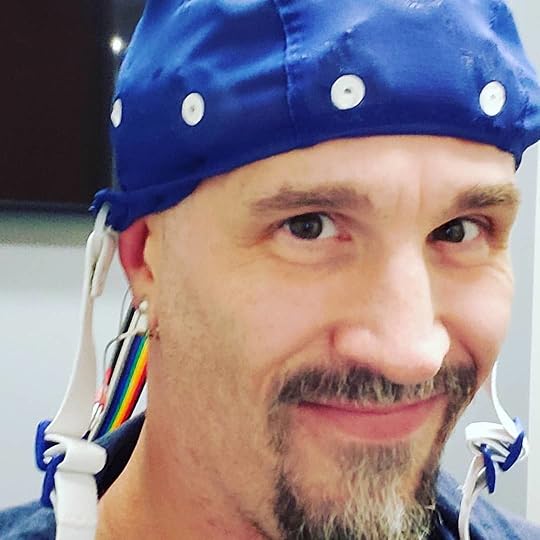
I got through the rest of the year and half of 2019 before hitting the proverbial wall of emotion when I realized that despite the improvements in the functional and emotional areas, I had a long way to go. I dusted off my notes for the brain book, hoping someone from my list of experts I wanted to interview would point me in the right direction. I contacted a few people and set up interviews, only for me to cancel them because the depression still had hold of me and I desperately wanted to distance myself from the subject. Fortunately, my sister sent me an email about the amazing results her son was having with neurofeedback and a specialized form of chiropractic that focuses on the upper cervical area. He’d been dealing with post-concussion syndrome for quite some time and seemed to have turned things around at Vital Head and Spine in Pasadena.
Just as I had with Gordon’s protocol, I discussed the treatment plan with my wife, weighing the cost versus rewards. We both somehow still believed I was fine and didn’t really need it, but agreed I should at least see if the testing showed anything critical.
On the NUCCA (National Upper Cervical Chiropractic Association) side of the practice, the x-rays revealed small, but significant shift of the two bony rings (vertebrae) at the base of my skull. This was affecting blood flow and cerebrospinal fluid flow in, and out, of my brain. It was also causing my brain to get distorted messages from the sensors, called mechanoreceptors, in my muscles and joints which was affecting my sense of balance and coordination.
On the brain training side of things, led by Dr. Licata, the results were sobering. Despite my ability to test high on brain games and such, the Integrated Visual and Auditory (IVA-2) test had me pegged as ADHD and ADD, my auditory scores nearly half those of a normal man my age. Even scarier was seeing the prevalent dark blue of my frontal lobe qEEG (quantitative electroencephalography) images which illustrated severely under functioning areas of my brain. Not only was this compromising my executive functioning, but was affecting my higher brain centers from regulating my lower emotional centers. In addition, we could also see how my brain was trying to adapt to chronic poor sleep, also probably caused by my past concussions.
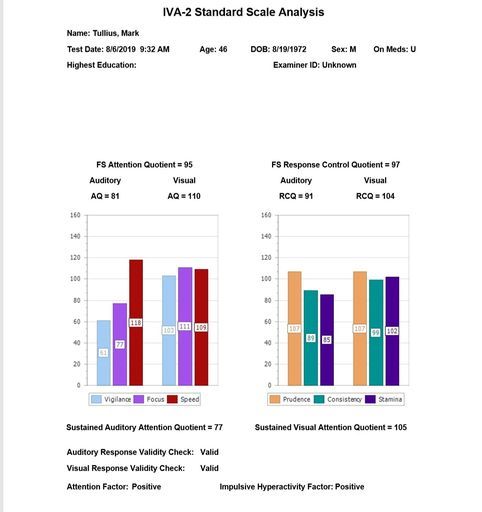

After seeing these results, the cost of the program wasn’t a factor. If I could improve my diminished brain function, I was obligated to my family to try.
Although I didn’t feel any significant changes immediately after the NUCCA adjustments, I soon began feeling better overall and my low back problem largely went away thanks to the improved signals from my brain balancing my body.
On the neurofeedback side, I noticed feeling better after just a couple of sessions, both my sleep and overall stress reaction were much improved. By my second week, I was so convinced it was working that I had my wife and daughter begin their own treatment protocols. By ten sessions in, I was telling anyone who would listen just how much this training had already improved my life.

After twenty sessions, I retook the IVA test and remapped my brain. My results were encouraging, no longer triggering for ADHD and revealing noticeable improvement in many areas.
During the review, Dr. Licata also helped ease one of my fears. I told him I was afraid that even though I was feeling better, what if it was just a temporary fix and I would develop CTE or some form of dementia anyway.
He said we know enough about the mechanisms of the disease to feel confident it shouldn’t develop. A big part of this is due to the improvement of deep sleep which is of critical importance as this is where our body removes wastes like Tau and Beta Amyloid that wreak havoc in neurodegenerative diseases like CTE and Alzheimer’s. I was also treating overall inflammation with diet and supplements as to not continually cause new damage.
I just completed my fortieth session and couldn’t be happier with the results of my final retesting. Now my scores are higher than normal and I no longer test for ADHD or ADD.
Although the training does come with a considerable price tag, I’ve already begun another phase that will focus on emotional regulation and strengthening the areas we’ve already improved.
I still have other treatments to explore and experts to interview, but I am feeling much more hopeful now than I was at any other point of this process.
By treating the functional, emotional, and structural areas, I have attained a much healthier, happier, and safer place in my life. I believe I have significantly lowered the odds that I will develop CTE or another form of dementia. It has cost quite a bit of time and money, but it’s a small price to pay when considering my overall health and happiness and the well-being of my family.
For those that are interested in the cost of the programs please contact the businesses. Here is a rough estimate of what I spent:
Millennium - $3,000 for the year -
NUCCA – $2,000 -
Neurofeedback - $4,500 for the mapping and 40 sessions
Therapy - $100 a session - $2,500 year
Supplements - $2,500 a year
https://youtu.be/RwRYVxkq9ks
May 12, 2020
Paying the Price

Last year, I hit a pretty hard depression. Part of it was physical, not being able to train jiu jitsu or practice yoga due to neck, back, and shoulder issues. The other part was mental, the research for my book on traumatic brain injuries (TBI) and Chronic Traumatic Encephalapothy (CTE) weighing me down.
I couldn’t stop thinking about Junior Seau and Andre Waters killing themselves. Aaron Hernandez and his ravaged brain, convicted of the murder of a friend. I worried about Gary Goodridge and my numerous MMA friends dealing with varying degrees of brain damage. My thoughts would often turn to a former boxing opponent and sparring partner whose speech had become difficult to understand, his emotions a mess. I was burdened with the knowledge that a Brown University teammate, who'd spent the last six years dealing with CTE symptoms, only had a short time to live thanks to the combination of the neurodegenerative disease and Acute Myeloid Leukemia. This man, who’d been told he had the frontal lobe of a 75-year-old, rattled off stories about myself that I can’t even recollect, my time at Brown, and much of my life, a messy blur.

I told myself to get over it; I was making this into something bigger than it needed to be. I hadn’t had nearly the amount of head trauma many NFL players had. Except for excessive caffeine and cannabis use, I’ve led a healthy lifestyle over the last decade, and if my brain was deteriorating further, surely, I’d be aware of it.
But I couldn’t deny that feeling was back. The one I’d kept at bay through yoga, jiu jitsu, cognitive therapy, meditation, cold therapy, alcohol, and psychedelics. That dark, scary feeling I’d had since I was ten, if not younger.
The mixture of rage and depression didn’t compute. It used to for the explosive child, the troubled teenager, the failed fighter, the loser who never did a damn thing with his degree, but that was another life. My life was beautiful now, with a wonderful wife and two incredible children. We were set financially and everyone was healthy. I had close friends, a good support system, was publishing books at a proficient rate, and had found a balance between family and writing.
The story I’d been telling myself was that I had lucked out and was blessed with a resilient brain, all of the concussions and knockouts free of any lasting effects. Anyone that’s read my fiction knows I’m a doom-and-gloom kind of guy, so maybe I’m just hardwired to focus on the negative. And even if all those brain injuries did cause problems, surely I’d gotten past them by now, especially with the treatment protocol I was on.
But still, I had to consider the symptoms. I opened my laptop and started a new document, realizing that if I didn’t write it down, I’d forget all about it or rationalize it away.
Impulsive behavior: Guilty. Whether gambling, video games, or drugs, I can be an addict.
Memory loss: I can’t tell you the number of times friends have shown me photos of events to prove that I was there. At a recent party, three different people laughed somewhat uncomfortably when I introduced myself to them, even though we’d been acquaintances for years.
Difficulty planning and carrying out tasks: It can take me days to respond to emails. The littlest things are written down in hopes I’ll one day do them.
Substance abuse: Thirty-two years of cannabis and counting, along with plenty of experimentation.
Emotional instability: It’s not all the time. Usually I’m a fairly happy, even sweet guy, but it doesn’t take a whole lot to rock the ship. One crappy night of sleep and my emotions are all over the place. I don’t respond well to confrontation.
Depression or apathy: I never would’ve considered myself depressed until a year ago, but that’s just due to the stigma behind the word. There’s no denying that’s what I’m experiencing.
Suicidal thoughts or behavior: I struggled with this most my life, spending too many of my college nights with a gun in my mouth. It’s not something I’d ever do now that I have kids, and the urge has been dormant for the past decade, but even a trace of that self-destructiveness is something I must be aware of.
So regardless of the source of damage, there’s something wrong with me. Whether it was from a TBI, CTE, substance abuse, childhood scars, or good ole genetics, my brain is not in a good place.
That thought was depressing, but I’d written it down, given a voice to my fear. I felt a little better about it the following day, but couldn’t read it without breaking into tears. Then after an honest and loving talk with my wife, something shifted and I wrote three more lines that changed everything for me.
But it’s all good.
I’m going to fix it.
I have to.

Fixing it is what I’d been attempting to do since 2013 when a close friend urged me to research brain damage. He’d been photographing segments of my journey to 100 MMA gyms across the country, and was having a hard time watching me get my ass kicked by athletes half my age and with three times my talent.
The more I read up on TBI’s, the more I feared I had really screwed up. I was a reckless kid, experiencing my first serious concussion when I smacked my head on a schoolyard sprinkler at six or seven. It’s impossible to count how many I’d had since, but there had been plenty. In seven years of high school and college football, I’d lost consciousness six times. On top of that I’d had constant trauma playing defensive line like a ram, always striking helmet to helmet. While attempting an MMA career, I was knocked out twice. On another two occasions, my brain was rattled so badly that I completely lost at least 15 minutes of time, and there were a ridiculous number of occassions where I left the gym with a moderate concussion. While attempting a boxing career, I consistently slurred my words and reversed their order. Between boxing and MMA, I had 14 professional matches and a losing record, a sure sign I’d taken more damage than I had dealt. Add a few motorcycle accidents and a 70-mph car collision, and it is amazing I can write my own name, let alone a novel.
The cumulative brain trauma made me a prime candidate for dementia and was likely responsible for my spotty memory. All the afore mentioned damage had been almost a decade before the latest stretch of unnecessary blows to the head where I acquired at least five more concussions: my head slamming off the mat at Team Quest, nearly being knocked out at Syndicate MMA, a nasty head kick at Alliance MMA, and brutal beatings by Fabricio Werdum and Renato Babalu at King’s MMA.

Although I wasn’t excessively worried about my brain health, I was concerned enough to implement some recommendations I found online. I began playing brain games on Lumosity and a couple other platforms, my scores in the top percentiles assuring me I was fine.
The other big take away was the importance of exercise. Not only can regular exercise relieve stress, help with pain, and improve overall well-being, it’s also good for the vascular system in your brain. Fortunately, I was motivated to continue training jiu jitsu and practicing yoga, feeling fit at the lightest weight I’d been since high school at 208 pounds.
In 2015, I participated in the Professional Fighter study at the Cleveland Clinic Lou Ruvo Center for Brain Health in Las Vegas, NV. Filling out the paperwork about my past was depressing but I felt better after undergoing a battery of tests, blood work, and an MRI. The head of the program, Dr. Bernick, assured me I was doing what I should to hopefully postpone or prevent a decline. On top of the exercise and better sleep, this included practicing guitar and learning German, activities that stimulate the brain.

In 2018 I added Wim Hof inspired breathing and cold-water therapy to my routine, cleaned up my diet, and improved my sleep. I also began seeing a therapist, aware that cognitive therapy could rewire the brain and perhaps help me figure out why I had always been so dark and full of self-hate. I also wanted an unbiased person who could assess me and my personality and then monitor how I responded to the different types of treatments, but the real motivation for going was because my marriage needed it.
The therapist helped me see the ways I was failing as a spouse and how to address issues that needed resolving. It also shed light on my perfectionism and low self-esteem. Therapy seemed to reduce my overall anger and anxiety, but it was still there.
During this time, I listened to the Joe Rogan Podcast #1056 with Dr. Mark Gordon of the Millennium Neuro-Regenerative Centers. Dr. Gordon described what happens when a traumatic brain injury occurs and dispelled many of the myths surrounding them. Most people assume in order to have a TBI the individual needs to be knocked unconscious or have a very significant blow to the head, but Dr. Gordon explained the process could be started much more easily, even with a minor car accident or ride on a roller coaster. Once the injury occurs, the brain becomes inflamed and this inflammation expands and disrupts the brain’s ability to self-regulate hormones.
Dr. Gordon explained how many symptoms of PTSD and TBI overlap such as depression, anxiety, irritability, cognitive deficits, insomnia, and fatigue. In Gordon’s opinion, PTSD is a manifestation of a TBI. Head injuries are often forgotten but commonly identified during detailed patient histories. His approach is to treat patients with hormone replacement therapy to reduce the injury-provoked inflammation in the brain that has compromised functioning. At the time, he claimed to have turned around the lives of over 1,500 military personnel.
Although I didn’t believe I needed the protocol, I talked it over with my wife and we agreed the cost of the program would be worth trying. Even if it didn’t do anything for me, I could write about it in this book.
It wasn’t long before Dr. Gordon’s daughter, Dr. Alison Gordon went over my blood work results with me, pointing out all the ways it was consistent with someone who had TBI’s. She recommended several supplements and one prescription of a natural testosterone booster to bring my hormones to normal levels. I wasn’t expecting much change because I felt fine, but two weeks after being on the protocol I broke down crying in my backyard, not due to anything being wrong, but because it was the first time I fully realized just how terrible my symptoms had been. Not having the weight of the incredibly high levels of anger, depression, and irritability was overwhelming. Another two weeks on the protocol and I felt as if I was in the best emotional place I’d ever been with a mental clarity I'd been lacking.

I got through the rest of the year and half of 2019 before hitting the proverbial wall of emotion when I realized that despite the improvements in the functional and emotional areas, I had a long way to go. I dusted off my notes for the brain book, hoping someone from my list of experts I wanted to interview would point me in the right direction. I contacted a few people and set up interviews, only for me to cancel them because the depression still had hold of me and I desperately wanted to distance myself from the subject. Fortunately, my sister sent me an email about the amazing results her son was having with neurofeedback and a specialized form of chiropractic that focuses on the upper cervical area. He’d been dealing with post-concussion syndrome for quite some time and seemed to have turned things around at Vital Head and Spine in Pasadena.
Just as I had with Gordon’s protocol, I discussed the treatment plan with my wife, weighing the cost versus rewards. We both somehow still believed I was fine and didn’t really need it, but agreed I should at least see if the testing showed anything critical.
On the NUCCA (National Upper Cervical Chiropractic Association) side of the practice, the x-rays revealed small, but significant shift of the two bony rings (vertebrae) at the base of my skull. This was affecting blood flow and cerebrospinal fluid flow in, and out, of my brain. It was also causing my brain to get distorted messages from the sensors, called mechanoreceptors, in my muscles and joints which was affecting my sense of balance and coordination.
On the brain training side of things, led by Dr. Licata, the results were sobering. Despite my ability to test high on brain games and such, the Integrated Visual and Auditory (IVA-2) test had me pegged as ADHD and ADD, my auditory scores nearly half those of a normal man my age. Even scarier was seeing the prevalent dark blue of my frontal lobe qEEG (quantitative electroencephalography) images which illustrated severely under functioning areas of my brain. Not only was this compromising my executive functioning, but was affecting my higher brain centers from regulating my lower emotional centers. In addition, we could also see how my brain was trying to adapt to chronic poor sleep, also probably caused by my past concussions.


After seeing these results, the cost of the program wasn’t a factor. If I could improve my diminished brain function, I was obligated to my family to try.
Although I didn’t feel any significant changes immediately after the NUCCA adjustments, I soon began feeling better overall and my low back problem largely went away thanks to the improved signals from my brain balancing my body.
On the neurofeedback side, I noticed feeling better after just a couple of sessions, both my sleep and overall stress reaction were much improved. By my second week, I was so convinced it was working that I had my wife and daughter begin their own treatment protocols. By ten sessions in, I was telling anyone who would listen just how much this training had already improved my life.

After twenty sessions, I retook the IVA test and remapped my brain. My results were encouraging, no longer triggering for ADHD and revealing noticeable improvement in many areas.
During the review, Dr. Licata also helped ease one of my fears. I told him I was afraid that even though I was feeling better, what if it was just a temporary fix and I would develop CTE or some form of dementia anyway.
He said we know enough about the mechanisms of the disease to feel confident it shouldn’t develop. A big part of this is due to the improvement of deep sleep which is of critical importance as this is where our body removes wastes like Tau and Beta Amyloid that wreak havoc in neurodegenerative diseases like CTE and Alzheimer’s. I was also treating overall inflammation with diet and supplements as to not continually cause new damage.
I just completed my fortieth session and couldn’t be happier with the results of my final retesting. Now my scores are higher than normal and I no longer test for ADHD or ADD.
Although the training does come with a considerable price tag, I’ve already begun another phase that will focus on emotional regulation and strengthening the areas we’ve already improved.
I still have other treatments to explore and experts to interview, but I am feeling much more hopeful now than I was at any other point of this process.
By treating the functional, emotional, and structural areas, I have attained a much healthier, happier, and safer place in my life. I believe I have significantly lowered the odds that I will develop CTE or another form of dementia. It has cost quite a bit of time and money, but it’s a small price to pay when considering my overall health and happiness and the well-being of my family.
For those that are interested in the cost of the programs please contact the businesses. Here is a rough estimate of what I spent:
Millennium - $3,000 for the year - http://www.tbimedlegal.com/
NUCCA – $2,000 - https://www.vitalheadandspine.com/
Neurofeedback - $4,500 for the mapping and 40 sessions
Therapy - $100 a session - $2,500 year
Supplements - $2,500 a year
https://youtu.be/RwRYVxkq9ks
March 3, 2020
Reader Appreciation
November 27, 2015
Time with American Top Team
Although I’m in the writing phase of Unlocking the Cage and was supposed to be done with my research (which my wife calls playtime) I felt like the book wouldn’t be complete without visiting Florida. I’d had great experiences with visits to American Top Team affiliates in CT, CA, OK, and PA, and jumped at the opportunity to visit the massive facility in Coconut Creek. My main goal was to spend time with Steve Montgomery, who I’d already interviewed over Skype and will focus on in the book, but I also had the chance to interview a few other fighters I’d watched on The Ultimate Fighter Season 21 along with a couple coaches.
I also had the honor of getting smashed by some of the guys as I struggled to make it through half a workout. Hope you guys will check out the videos down below to get a sense of who these men are and why they fight. Click on the photo or the link below it to watch the videos. Click here for more photos on Facebook.
Unlocking the Cage with Nathan Coy
Unlocking the Cage with Steve Carl
Unlocking the Cage with Conan Silveira
Unlocking the Cage with Chuck Isen
Unlocking the Cage with Billy Padden
September 7, 2015
The Good Fight
This is my fourth trip to Vegas since I began Unlocking the Cage three years ago, but this time I’m leaving my workout gear and camera at home. All I have is a stack of papers and a 10 o’clock appointment at the Cleveland Clinic Lou Ruvo Center for Brain Health, where I’ve volunteered to participate in their fighter study.
My wife finishes her breakfast and questions why I’m just now filling out the forms. I ask her to give me a few minutes while I figure out how many rounds I’ve fought, how many concussions I’ve accumulated, and decide how to answer the questions on whether or not I’m displaying any symptoms of permanent impaired brain function.
Finally, I look up from the papers and tell Jen that I’d been putting off the forms because I didn’t want to think about them. As much as I don’t want to, I admit I’m nervous about the appointment. I worry that my occasional slow speech and constant terrible memory might be indicators of a troubled future.
Jen assures me that I’ll be fine, and I return to the papers, relieved that the next question, which asks whether I fall asleep in unusual situations, is easy to answer. I’ve never done anything like fall asleep in the middle of a conversation. I feel more confident that all the tests will come back showing I’m fine, one of the lucky ones who won’t develop brain damage from repeated head trauma.
I arrive early and walk around to the front of the building, even though the heat is almost intolerable. The building’s design is uniquely beautiful, a metallic masterpiece designed by Frank Gehry, but its chaotic curves fill me with a sense of dread, an image of a twisted brain. The courtyard and surroundings are relaxing and peaceful though, and I’m greeted by a friendly volunteer who guides me to the check in.

Photo by Cygnusloop99 shared on WikiMedia Commons
I’m 43, the youngest person in the lobby by at least ten years. The medical center is dedicated to finding more effective treatments for brain diseases and the fighter study is just just a small part of it. I don’t fit in here, I think to myself, at least not yet. I can’t help but look around, wondering what types of brain degeneration the different individuals might be suffering. One of my relatives is in the beginning stages of a fight with Alzheimer’s, and a friend’s wife of 62 years is about to lose her long, drawn-out battle. It’s not something I would wish on anyone.
Looking down at my paperwork, I realize that seeing my losing MMA and boxing records doesn’t bother me like it used to. It dawns on me, however, that a losing record is probably a solid indicator that I took way more punishment than I dished out. The time I had double vision and a headache for two weeks comes to mind. I question why I’d been so careless when it came to concussions in football and fighting.
An assistant escorts me back and briefs me on the cognitive testing. I feel prepared because I’ve played a lot of brain games through Lumosity since I began worrying about my brain two years ago. I score above average on some tests, but my reaction time’s only average. The speech part is next. I stumble through a couple of these tests, but the assistant assures me I’m doing fine.
The physical test is all about balance, so I’m fairly confident, especially since I’ve been doing a lot of yoga. I feel solid standing with my feet together, hands on hips, eyes closed, but I just can’t do it with my right leg raised. I try again and again but can’t hold the pose for more than a second. The assistant doesn’t say whether or not that could mean anything, so I jot down a note to ask the doctor.
After a painless blood draw, I meet with Dr. Charles Bernick, the Associate Medical Director of the Clinic and principal researcher of the Professional Fighters Brain Health study which currently includes about 400 current and 50 retired fighters. I mention that I’ve interviewed about the same number of MMA athletes from around the country and I always look for noticeable signs of damage, especially with guys that have had long careers or taken a lot of abuse due to their fighting style. Overall, I’ve detected very few indications of brain damage, even amongst those with 40 plus fights under their belt, but I admit that my brief and uneducated analysis is very limited since I didn’t know the fighters prior to their careers and their self-assessments probably aren’t very accurate. I believe many fighters might not notice subtle changes in behavior or ability and, if they do, they may attribute it simply to aging.

Fabricio Werdum
Dr. Bernick nods, and I’m reassured to hear he has a fairly similar impression of MMA fighters. He tells me the repeated head trauma can lead to progressive neurological deficits, but it doesn’t occur among all athletes. It’s too early to guess what percentage of MMA fighters might be affected, especially since the sport is so new and symptoms of permanent brain damage might not present for five years or more after the last trauma.
There’s no denying brain trauma is affecting some MMA athletes though. We see the early retirements and talks of concern, fighters giving up their dreams because they value their brain health. It doesn’t seem to happen often, but how many fighters are actually aware of a neurological decline, and would they even admit it or let it stop their career? That also doesn’t take into account the number of lower-level professional and amateur fighters who don’t make the news. Overall, I’m still fairly confident the risk isn’t high for MMA fighters, and I’m convinced both boxing and football are much more likely to lead to problems.
Having played both high school and college football, and having gotten my ass kicked all over the boxing ring and MMA cage, I can’t help but wonder what my odds are. What did my tests indicate? What does my awful balance reveal?
Dr. Bernick goes over my history, and asks me to fill him in on the details. I talk about the three times I lost consciousness in football, and the three much more serious concussions in fighting. I tell of the slurred speech and difficulty arranging words that I experienced while boxing but fortunately normalized when I went back to MMA. There’s the final concussion where I saw a punch coming; the next thing I knew it was fifteen minutes later and I was in the locker room, talking to my coach who was about to take me to the hospital. I explain that I didn’t take another blow to the head for the next nine years, but then got sucked back into the sport and sparring. I admit to being dumb enough to have my brain knocked around by Fabricio Werdum, Renato ‘Babalu’ Sobral, and dozens of fighters around the country. It was then, I tell him, that I did my research on brain damage, switched over to Brazilian Jiu Jitsu, and hadn’t been struck in the head for over a year.
We went over my current status and I explained that I wasn’t experiencing any mood shifts or noticeable problems. My biggest issue was the memory loss, something I became aware of after college but was never too concerned about. Instead of worrying it was an indicator of a decline, I liked to think all those forgotten memories were discarded because my brain needed the room to store something more important or, more likely, from a quarter century of marijuana use.
Dr. Bernick took note of everything and continued the neurological examination by checking my reflexes, gait, and balance, and had me follow his fingers with my eyes. He discussed the goals of the project and how they hoped to answer many of the questions I had.

Renato Sobral
The study’s emphasis is on early identification of neurocognitive decline and prediction of long-term neurological consequences. They hope to discover why with similar levels of trauma, some fighters are more at risk for the decline in brain health. With the MRI I was about to undergo, and the other tests I’d just finished, the researchers hoped to detect even the earliest and most subtle signs of brain injury. By repeating these tests four years in a row, they hope to find biomarkers or clinical indicators that can predict cognitive decline, and better understand the impact of each risk factor.
With so many fighters involved in the study, and the massive amount of data, it is promising that the research team will discover the answers to these questions. The only problem is that, as to be expected with any volunteer longitudinal study, there will be a number of participants who don’t complete the testing. The continued recording of data is where most answers will come from. It is crucial that participants complete the four years of testing. Even if a fighter retires and no longer experiences head trauma, the comprehensive test results are invaluable.
I’m committed to the testing and I hope to encourage other participants of the study to finish all of their evaluations. Maybe even more fighters will volunteer for the study. The results will not only help fighters and our sport, but anyone else with head injuries, whether civilian or military. It may even help to find treatments for diseases such as Alzheimer’s and Parkinson’s. I sincerely appreciate each of the fighters who have already participated, as well as the tremendous support from the UFC, Bellator, and Top Rank for their funding.
I am not a crusader for brain health who thinks MMA is going to mean the doom of everyone who participates. In fact, I’d say the reward of competing in martial arts outweighs the risk. That said, I’ve spent the last three years finding out what type of people fighters are, and I consider lots of these men and women my friends. I’ve met so many incredible and inspiring individuals and it is difficult knowing that some of them will have brain health issues. I understand most current fighters like to block this out and think it won’t happen, but let’s face it, getting punched, kicked, slammed, elbowed, and kneed in the head isn’t going to have a positive effect on your brain. My fellow fighters, whether or not you participate in the study, I ask that you be more aware of your brain health. Ask friends and loved ones to let you know if they see any changes in your mood, speech, movements, etc. Most importantly, train smart and surround yourself with informed coaches and managers who’ll look after you. I also suggest that you be proactive and do whatever you can to postpone any decline.
For more on the study and how to participate click here
To see what they’ve found so far, please check out this link.
If you’re interested in hearing more about whether or not it’s worth the risk, here’s an article I wrote for Ben Greenfield about the similarity between MMA and endurance athletes.
If you’re interested in Unlocking the Cage, sign up for my newsletter for info on when it will be released and how to pre-order.
June 19, 2015
What a Little Bitch

Photo by Bryan Lopez for GrappleTv
This past Sunday I competed at Dream Jiu Jitsu’s The Baddest Blue, a No Gi submission only tournament. The other two tournaments I did this year didn’t have many competitors in my division, but this one was stacked with nearly 40 guys over the 180lb cutoff. As an added bonus, heavyweights went first.
Since the event took place just ten minutes from my house, both my wife and 7-year-old daughter attended. The night before they asked me what my goals were and I said I didn’t really have any, I just hoped my partially torn ACL would hold up. They reminded me the importance of goals, and my daughter suggested I should shoot for at least 3 wins. I didn’t think that was very realistic, but went ahead and told her I wanted to win it all. I’m usually one of the bigger guys on the mat and do fairly decent against the lighter blue belts. Maybe I’d get really lucky and be able to pull something off.
I did get lucky and made it past the first round, but that was only because I got a bye thanks to an uneven number of competitors. Then I went against Max Necochea from Victory MMA. I’d never met Max before but we had a friendly talk before our match. He was a good deal bigger than me, but I felt pretty good, hoped his conditioning was worse than mine.
Then we shook hands and I pulled guard, realized pretty quickly that had been a terrible idea. I spent the next 17 minutes on my back, defending against chokes and armlocks, but never mounting any kind of offense or getting further than half guard. I was completely controlled the entire match until Max submitted me with an Americana.
The next day as I drove Olivia to her jiu jitsu practice at 10th Planet Buena Park we talked about the match and how surprisingly sore I was from just lying there. Olivia said it was like I was the pancake and Max was the butter. Then she quickly corrected herself. “Actually he was the knife spreading the butter all over you.” A pretty accurate observation for a first grader.
Later when Olivia came in to say good night, she asked what I was working on. I said, “An article on the tournament and how disappointed I was with myself.”
“You shouldn’t be disappointed.”
I thanked her and made sure she understood that I wasn’t upset with myself, I was just trying to understand the real reason for my feelings. I asked if she’d like to help me write the article and of course she said yes because anything’s better than bedtime. To see if she was just parroting me or really believed it, I asked her what were some reasons why I shouldn’t be disappointed.

Olivia with Travis Newaza
“Well, your knee’s broken.”
I wore a brace and my knee hadn’t bothered me, but I said, “Kind of, what else?”
“You don’t practice very often.”
True, I only get in 2-3 times a week and do a little bit of yoga.
“And he was bigger and stronger than you.”
I said, “Plus, I have some very bad training habits. I’m lazy and stay on my back, allow myself to be put in side control and stay there waiting for the guy to make a mistake.”
She smiled. “See.”
“These all contributed to me losing the match, but not why I was disappointed. I didn’t try as hard as I could and at the end I gave up. None of these reasons justify why I quit.”
I made sure Olivia didn’t think I was making excuses. Max is a very good competitor who nearly won the tournament. He got his blue belt through Baret Yoshida and has been training consistently under Jeff Glover and Dean Lister for the last year. He would have beat me had I been healthy and going 100%. “Toward the end of the match I just wanted it to end. It didn’t matter that you and Mommy were watching. I no longer cared about representing 10th Planet or proving I had some ability. Instead of trying to buck and scramble, I was having a conversation with myself, checking in on my knee to see if I could use that as an excuse, thinking that I should stop trying to defend and just end the match. I was exhausted and and just wanted it over.”
“Why’s that a big deal if you knew you were going to lose?”
“I guaranteed I was going to lose instead of trying to win, but the real problem is that I was mentally weak, that I even had that internal conversation in the first place. And this isn’t the first time it’s happened.”
Sometimes Olivia gets a little squeamish when people talk about blood so I asked her if she was okay hearing about my fighting, explaining that it wasn’t much different than grappling, just with all the strikes that really don’t hurt that much. She said it was fine so I explained my fight against Bobby Hoffman where around the 10 minute mark I pulled guard, failed with the guillotine, got mounted by the monster and then ate what seemed like a dozen hammerfists to the face before tapping to the punches. I knew I wasn’t going to win the fight and I quit. A real fighter would have kept fighting.
She said, “Sounds like you did the smart thing.”
I considered it. “Maybe. But I don’t like being mentally weak. That’s one of the reasons why I got back into MMA with Unlocking the Cage (UTC). I felt soft, like I couldn’t handle a real challenge, whether physical or something bad life might throw my way.”
“But why’s that so important to you?”
I was impressed with my little therapist and didn’t have the answer. I’d been thinking of that question a lot while researching UTC. Why did I want to fight? Why is being tough still important to me? What do I have to prove?
I told her, “Know what, I don’t have that answer yet. Maybe it’s no longer important for me. Maybe it’s just a quality that I admire in others, one of the reasons I respect the real fighters out there. Whether MMA or high level BJJ guys who don’t know the meaning of the word quit, I appreciate what these guys go through and overcome, not only in competition but in the daily grind. I just wish all fans had that level of respect for the people that go out there and put everything on the line.”
I don’t know whether or not I’ll become mentally stronger, but I’ll test myself again tomorrow when I compete at the Subhuman blue belt tournament at HardQore, 10th Planet Headquarters in downtown Los Angeles. Maybe I’ll discover that I just don’t have what it takes and I need to stick to rolling in classes, but I’m not ready to call it quits yet.
Thanks to Sean Maghami and the guys at Dream Jiu Jitsu for putting on a great tournament. Looking forward to doing the next one.
April 20, 2015
Lessons Learned from Fighters
I’ve been working on Unlocking the Cage for three years, largely in part to having a toddler, but I’m glad it’s taken me this long to write the book. I’ve had time to re-watch nearly 400 interviews, allowing me to break down the martial artists’ reasons for fighting, and to learn more about who these individuals really are. The extra time has also given me the opportunity to follow fighters through their ups and downs, see who’s succeeding in the cage, and more importantly, in life. Three of these athletes fought Saturday night on UFC on Fox 15. Each of them had left me with some great lessons by sharing their stories, and I was thrilled that they were all victorious.
First up was Diego Brandao who I talked with at Jackson-Winkeljohn’s back in August ’13. Diego didn’t have an easy upbringing in Brazil, going to work at 13 to provide for his family when his father died. This created an anger inside him that drove him to fighting. He moved to the US with very little money, determined to be successful so he could buy his mother a house. Through hard work and great coaching he won “The Ultimate Fighter 14” and achieved his dream. On Saturday it was good to see him bounce back from his last two losses. You can watch Diego’s interview here.
Diego Brandao:
Believe in yourself. Set goals. Sacrifice. Hard work.
Next up was Beneil Dariush whom I met back in August ’12 when he was 3-0 as a pro. That morning I watched him teach a BJJ gi class, hit the mitts for forty minutes, then train with the rest of the pros. After practice he talked about growing up in Iran, and how wrestling led him to jiu jitsu. He reflected on his pride at achieving his black belt and his serious struggle to decide whether he should focus on BJJ or MMA. He wanted to be the best at both sports but understood that he had to choose one. With last night’s incredible performance against Jim Miller, one of the toughest opponents out there, Benny won 8 out of his next 9 fights (5-1 UFC) since making that decision.
There are several reasons I’m glad to see Benny succeed. Since that first day, I’ve had multiple chances to watch Benny train and coach others at Kings. Besides the fact that he’s a likeable, I appreciate his take on MMA. Training changed Benny from someone with a bit of a temper to a calm, confident, and humble man who doesn’t believe in violence. He fights to improve his technique and display his skills as a martial artist. It’s obvious that he does what he loves, and he has said that he’s happiest when he’s fighting and training.
I also appreciate how Benny is using his voice to fight for an even bigger purpose. Take a moment to read his article on faith and the plight of Assyrian Christians that are being persecuted in the Middle East today. You can watch Benny’s video here.
Beneil Dariush:
Do what makes you happy. Prioritize. Be grateful. Stand up for your beliefs.

Paige and Nico Lozada
I was anxious about the next fight, wanting to see Paige VanZant do well to quiet her critics. It’d been a year since I spoke with Paige at Team Alpha Male not long after she signed with the UFC. Out of all the fighters that I’ve talked with, Paige takes the cake for being the most excited, happy, and full of life, even after a grueling practice.
Paige’s father was a wrestler who roughhoused with Paige and her brother, but it wasn’t until she was jumped by a group of older and bigger girls that she began training MMA. This boosted her confidence and gave her skills; she started fighting because it was fun, an outlet for her boundless energy.
This young woman made a great point of MMA being simply a sport, and acknowledged that she had had more injuries resulting from cheerleading than from MMA. Paige talked about how fighting is one of her passions, and she’ll continue to do it as long as it stays that way. As a father, I appreciated Paige talking about her parents who instilled in her the belief that she could do anything she wanted. They continually gave her the opportunity to try different activities, with the agreement that she would commit to a whole season if she signed up. In this way, they encouraged her to find what makes her happy and feel successful.
Paige VanZant:
Finish what you start. Don’t let yourself be bullied. Pursue your passion.
Thanks to Paige, Benny, and Diego for sharing their stories.
April 17, 2015
30-Day Details
In my last post I discussed why I was going to begin a 30-day improvement program and what my goals were. This is just April’s mission. Depending on what I like and don’t like, I’ll adjust at the end of the month, toss out the bad, keep the good. I’ll also adjust exercises due to my partially torn ACL.
I’d like to thank Ben Greenfield for Beyond Training and his website. Some of his suggestions were already part of my program, such as yoga and sauna, but the overall advice and recommendations on diet and supplements were a huge part in devising my plan. I’ve noted each of the additions with a BT that I added because of his book.
Although many of these items fall in multiple categories such as yoga, I tried to list them once.
Training
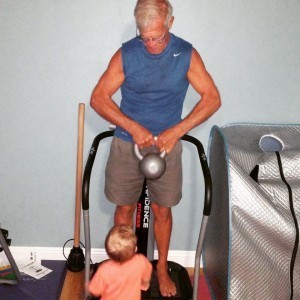 Yoga Lockdown – 3 hard sessions per week. 3 light.
Yoga Lockdown – 3 hard sessions per week. 3 light.
Onnit’s Primal Challenge – 3 sessions – watch their video here.
Vibration Platform – daily 10 minutes combined with light mace/kettlebell.BT
Swimming – 3 sessions per week, cold water – 20 minutes. BT
Improve posture, mobility, and balance. Daily. BT
Pull-up – Every time I go downstairs. BT
Brain
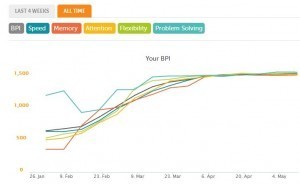
Click to read my blog on Lumosity
Lumosity – daily training session limited to 30 minutes because I’m a perfectionist with a very addictive personality. Blog on it
Rosetta Stone – German – Drei Sitzungen.
Writing – Unlocking the Cage and a few projects. 3 hours plus daily.
Brain-wave Entrainment – Daily, whenever I’m writing and prior to bed. Been listening to Dr. Jeffery Thompson. BT
Recovery
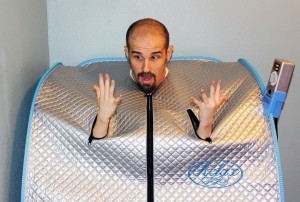
Why I now limit the sauna to 30 minutes
Far-Infrared Sauna – Daily. 30 minutes in the morning, 30 at night. Love this thing.
Chiropractic – Once a week. Here’s why I swear by it.
Cold Thermogenesis – Daily use of 110% Play Harder compression and ice shorts and waiting on my Cool Fat Burner vest. BT
Lifestream Generator – This thing is awesome but only one session a week combined with the Reiki. Check out this video to see Eddie Bravo experience it.
Reiki – once a week. Hopefully it will help me deal with the trauma from the next recovery technique.
Enema – Finally convinced it’s worth a try. BT
Lifestyle

I love my new workstation
My wife does not.
Wake to a soothing alarm followed by 15 minutes meditation, stretching and deep breathing. Sleep as Android App. BT
In bed by 11pm to get 8 hours of sleep. BT
Switched to natural health care products. BT
Replacing all harmful chemicals from house. Installed EMF filters from Greenwave Dirty Electricity Filters. BT
Switch to a standing workstation. BT
Limiting cellphone and computer. BT
Use buckets instead of checklists. Each day is assigned to a different task. Helps prevent me from being overwhelmed. BT
Nutrition
Caffeine detox for first 7 days. Then limited caffeine use. BT
A very clean diet, as organic as possible with healthy fats as the base. BT
I’ve been a big fan of Onnit’s mission and products and will be using the ones listed below on a daily basis.
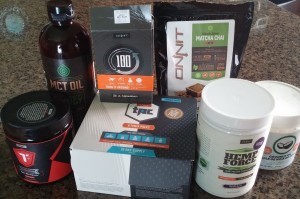
Click here to get Onnit.
Onnit’s Total Primal Care
Hemp Force
MCT Oil
T+ (after 7 day caffeine detox)
Matcha Chai Latte (after 7 day caffeine detox)
Here are some more products recommended by Ben Greenfield that I’ll be using. Check out www.greenfieldfitnesssystems.com if you want to see what else he recommends.
Living Fuel SuperGreens
Great Lakes Gelatin
Natural Calm Magnesium

